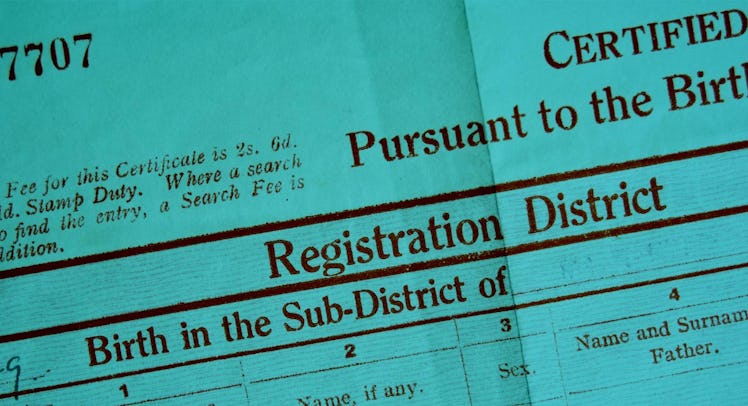What Adoptive Parents Need to Know About Birth Certificates
Obtaining an adoption birth certificate often comes with questions. Here's what experts say about obtaining birth certificates for adopted children.

Adoptive parents overwhelmed by the amount of paperwork confronting them may not immediately consider the complexities and importance of adoption birth certificates. But like an adult’s passport or driver’s license, the birth certificate is a key for many of a child’s daily experiences, including enrolling in preschool, seeing a doctor or signing up for Little League. With all the logistical planning adoptive parents must do, learning how to get a new birth certificate should be at the top of the list. Here’s what parents need to know about the birth certificate for their newly adopted child.
Two Birth Certificates for Adopted Children
One birth certificate will be created at birth, while the adoption birth certificate is filled out when parents finalize the adoption. The vital information will be the same on both (date and time of birth, etc). The original birth certificate will list the birth mother’s name, as well as the name she gave to the child. Adoptive parents can change this name to the one they have picked out on the adoption birth certificate, which will list both partners as the parents.
“The only distinguishing factor that might indicate this is not the original birth certificate is the child’s state of birth,” says Chuck Johnson, president of the National Council for Adoption. “If you live in New York and the birth certificate says your child was born in Texas, that might prompt some questions.”
Because nothing on the birth certificate indicates the child is adopted, it is up to parents to decide if and when to disclose the information to the child. Subsequently, should the adopted kid need to show their birth certificate to sign up for intramural soccer or join Little League, no one who sees it will know they are adopted either unless they choose to tell.
“Some people say it’s a falsehood to not list adoptive parents as ‘legal’ parents rather than biological ones,” Johnson notes. “But I think that’s a choice every family should make privately as far as what they wish to disclose, and when.”
Where is the Birth Father’s Name?
On the adoption birth certificate, “birth fathers are often left off, depending on the circumstance of the birth mother and her relationship with the father,” says Johnson. This can make it difficult to track down any information about the biological father in the future if the adopted child chooses to do so.
Limited Access to the Original
“After the adoption is finalized, the original birth certificate is sealed and kept confidential by the state registrar of vital records,” according to the U.S. Department of Child Welfare. “In the past, nearly all States required adopted persons to obtain a court order to gain access to their original birth certificates. In approximately 25 States, the District of Columbia, American Samoa, Guam, and Puerto Rico, a court order is still required.” For the other 25 states, access to the original birth certificate is usually gained through the consent of all three parties (the birth parent, the adoptive parents, and the adopted child).
For international adoption, parents typically choose to re-adopt their child once they have returned to the U.S., at which point a court can issue a new state birth certificate.
A Note on Open Adoption
“Today, more than 90 percent of domestic adoptions are what we call ‘open,’ meaning there is contact to varying degrees between the birth parents and adoptive parents,” says Johnson. A phenomenon that began in the 1980s, open adoptions are often done through private agencies and allow adoptive parents better access to information related to their new child’s medical history, as well as an original birth certificate. “We have copies of both the original and new birth certificate for our adopted child,” says Johnson, who used an open adoption process and maintained contact with his child’s maternal biological grandparents until their death.
This article was originally published on